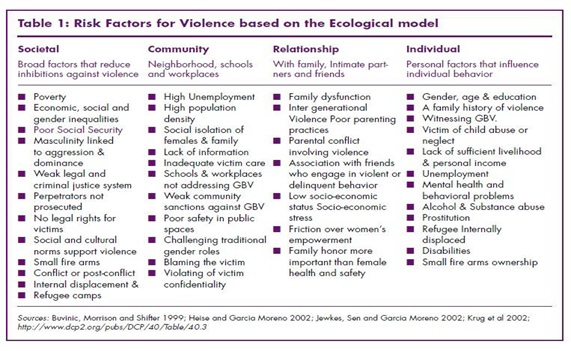- The ecological model was introduced as a framework for understanding some of the key factors that contribute to women‘s and girls’ risk of intimate partner violence, but it has been adapted to examine other types of violence to which women are exposed. The model is organized in terms of four levels of risk: individual, relationship, community, and society.

- The ecological model underscores the fact that in order to develop strategies for reducing and/or eliminating risk through broad-based prevention programming, it is critical to develop an understanding of the complex interplay of biological, psychological, social, cultural, economic and political factors that increase women’s and girl’s likelihood for experiencing violence as well as men’s likelihood for perpetrating violence.

- At the same time that it is important to reduce risk factors through, for example, interventions that target childhood abuse (individual level), exposure to parental conflict as a child (relationship level), weak community sanctions against GBV (community level), and poverty (society level), it is also critical to understand and support protective factors. Some protective factors for intimate partner violence identified through WHO’s multi-country research on health and domestic violence that can inform prevention efforts:
- completion of secondary education for girls (and boys);
- delaying age of marriage to 18;
- women’s economic autonomy and access to skills training, credit and employment;
- social norms that promote gender equality.
For more information on the ecological model and risk and protective factors, see Programming Essentials module.
